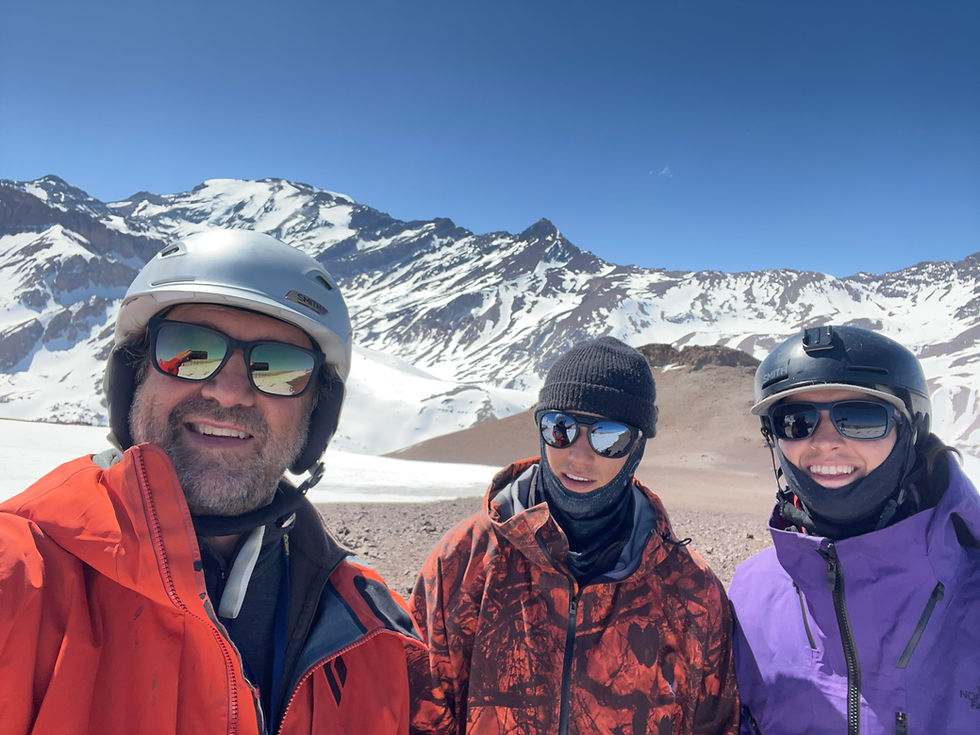Argentine Patagonia - Parque Nacional Los Glaciares and on to Ushuaia
- bstclair579
- Jan 24
- 3 min read
After crossing into Argentina, we headed to the small town of Perito Moreno and the community campground to meet our friends, Trevor and Coral. It seems that much of southern Argentina was named after Francisco Moreno, given the title of Perito, or technical expert. He was an accomplished explorer and academic who was responsible for much of eastern Patagonia becoming part of Argentina. Given the frequent animosity between Argentina and Chile, it is not a surprise that so much is named after him.
We had a nice visit with Trevor and Coral. They had just spent much of their last few weeks in southern Patagonia, and were getting ready to head to Buenos Aires and home to England. It was good to hear of their experiences. Next day we headed south on Ruta 40 to El Chaltén.
The landscape in Argentine Patagonia is mostly flat, dry, very windy grasslands from the Atlantic coast until the abrupt and dramatic rise of the Andes along the Argentine-Chile border. Many travelers comment on how boring the drive is, but I found the landscape fascinating. We did the long drive from Perito Morieno to El Chaltén. El Chaltén is famous as a base for hiking and climbing, including the spectacular Mount Fitz Roy and Cerro Torre peaks. It is the part of the northern unit of Argentina's Parque Nacional Los Glaciares. I wish we had more time to explore the area, but we needed to keep on towards Ushuaia.
The next day we headed to El Calafate and the southern unit of Parque Nacional Los Glaciares. We found a nice place to camp with no one around just outside of town. In the morning we went for a beautiful hike to see the Perito Moreno Glacier. The glacier is 19 miles in length, originating in the Southern Patagonia Icefield shared by Argentina and Chile and ending at Lago Argentina. The terminus is 3 miles wide, and regularly reaches to the other side of the lake to create an ice dam that periodically ruptures sending a torrent of water into Lago Argentina and down the Santa Cruz River. It is quite entertaining watching huge chunks of ice calving off the glacier into the lake.
Then it was on to Ushuaia, continuing the long straight drive across the wind-swept steppes of southern Patagonia. We camped near Laguna Azul, a small lake in a crater of an extinct volcano. There was not much along the way except a lot of sheep. The next morning we crossed into Chile and across the Strait of Magellan. Amazing to imagine Ferdinand Magellan passing this way more than 500 years ago, being the first European to make the crossing from the Atlantic to the Pacific Ocean. On to the island of Tierra del Fuego and back into Argentina. To my surprise, the flat grasslands gradually gave way to some beautiful forests and spectacular mountains. We camped the first night in Ushuaia just outside of town next to a beautiful river.
Ushuaia - Fin del Mundo, the furthest south city in the world. Ushuaia, like much of Argentina, is very patriotic with monuments to its history, including continuing to insist on the Malvinas, or Falkland Islands, as part of their country.
We spent a a couple days at an AirBnB getting ready for our Antarctic cruise. The morning before boarding the ship, we went on a tour with the cruise company to Tierra del Fuego National Park. We visited the furthest south post office in the world. And we learned about the sad history of the indigenous peoples of Tierra del Fuego and about their extraordinary adaptations to living in such a harsh environment. Uunfortunately they are no longer a part of our world.
On to Antarctica.
































































































































Comments